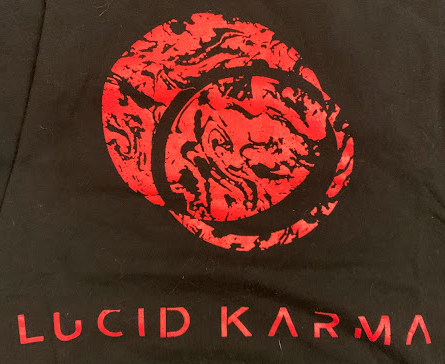Yesterday morning (October 20), I was reading Whitley Strieber's 1989 Roswell-incident novel Majestic on my phone's Kindle app. I flipped to a new "page" and read:
O that I had clasped my hand and had no intention of letting go. I was damned and I knew it.
That didn't make any sense in context, so I backtracked a couple of lines and read what was actually on the screen.
I occasionally make errors like this, where my mind mis-gestalts a block of text, and
have documented several of these on this blog. This one seemed meaningful, though, since the content so strongly suggested a particular passage from the Book of Mormon:
O that we had remembered the Lord our God in the day that he gave us our riches, and then they would not have become slippery that we should lose them; for behold, our riches are gone from us. Behold, we lay a tool here and on the morrow it is gone; and behold, our swords are taken from us in the day we have sought them for battle. Yea, we have hid up our treasures and they have slipped away from us, because of the curse of the land. O that we had repented in the day that the word of the Lord came unto us; for behold the land is cursed, and all things are become slippery, and we cannot hold them. Behold, we are surrounded by demons, yea, we are encircled about by the angels of him who hath sought to destroy our souls. Behold, our iniquities are great. O Lord, canst thou not turn away thine anger from us?
As related in my 2020 post "
All things are become slippery," this passage was the subject of a strange experience I had in 2006, when a line from it suddenly popped into my mind, together with the knowledge that the "complete quote" of which it was a part had some extremely unusual mathematical properties, which it did indeed turn out to have. I was an atheist at the time and hadn't touched the Book of Mormon in years, and the whole thing just seemed to come out of nowhere.
What was I doing when I had this 2006 "revelation"? I was worrying about my relationship with the woman I later married (October 20 is our anniversary) and reading The Grays, another Whitley Strieber novel about aliens. (Strieber has written lots of novels and lots of non-fiction books about aliens, but relatively few novels about aliens.)
I thought, "2006. That was 17 years ago." Then I noticed that the publication of Majestic (on September 11, incidentally) was 17 years before that.
That evening, I taught a children's English class. We had just started a new textbook, and I asked everyone to open to page 8. One of the girls for some reason instead opened up to pages 80 and 81 and, delighted by one of the pictures she saw there, help up her book and said, "Teacher, look at this!" It was a Wallace's flying frog, spreadeagled in mid-leap:
Early this morning (October 21), I was at a local coffee shop which always has BBC programs playing on the TV. I happened to glance up at the screen and saw three big vertical bars:
That seemed strange, so I kept watching to see what it meant. As soon as the bars faded from the screen, the next thing to appear was "17 years ago our eyes were opened":
There followed a series of short clips of wildlife: a couple of close-ups of animals' eyes, migrating Monarch butterflies, a jaguar jumping down from a tree, an undersea scene -- and then a spreadeagled Wallace's flying frog!
It was a trailer for Planet Earth III. The name of the program was displayed within an eclipse:
Here's the whole trailer on YouTube:
The rest of the opening sentence is "17 years ago our eyes were opened to the sheer wonder of our planet." On Thursday, one of my students, for an assignment about superlative adjectives, had written: "The Earth is the most beautiful place I know." It's an odd thing to say, since we have no experience of any other place, and it fits in with the "interplanetary" theme of the Strieber novels.
In the Majestic passage I misread, the aliens are causing Will Stone to fly through the air. He flies down low over a soldier and snatches his hat, after which he nearly collides with an enormous alien spacecraft. This made me think, for reasons I trust are obvious, of the Chairlift song "Le Flying Saucer Hat":
The song mentions celebrating the "universal eclipse," which is a link to the BBC trailer:
It's also a strong sync with a video I happened to watch last night, in which eclipse-like imagery was a symbol of totality ("l'eclipse universelle"). I haven't finished the video yet. As it happens, I stopped just at the moment of the eclipse and then went to bed, planning to finish it later.
Here's the video:
Note added:
When I was writing this post, I originally wrote, "2006. That was 17 years ago. Time flies" -- but then I deleted the last two words because they were trite and not really true. People say "time flies" to express surprise that a great deal of time has elapsed in what feels like a much shorter time, but I have no such feeling. My experiences of 2006 feel like they were, yeah, about 17 years ago.
When I posted this I added the tag "Chairlift" and was surprised to notice that this was not the first post thus tagged. When had I mentioned Chairlift before? In my November 2021 post "
Bee like a sunflower." In that post, I write:
"Bee like a sunflower" -- because it begins with an insect/verb pun followed by the word like -- made think of "Time flies like an arrow; fruit flies like a banana."
An added note at the end of the post (like the one you're reading now) said:
I found a dude wearing a sombrero . . . Only later did I remember that the line "Time is flying like an arrow" occurs in the TMBG song "Hovering Sombrero."
I then included a video of "Hovering Sombrero" and -- apparently just because it was another song about a flying hat, "Le Flying Saucer Hat."
In the present post, I mention that Majestic was published on September 11, 1989. "Hovering Sombrero" is from the album Mink Car, which was released on September 11, 2001.
"Time flies like an arrow; fruit flies like a banana" is normally attributed to Groucho Marx. This morning -- after writing most of this post but before adding this note -- I taught from a textbook page which used a picture of Groucho and Harpo to illustrate the meaning of comedy.
When did Groucho say that "time flies" line, though? I pretty much have all the Marx Brothers movies memorized, and I can't place it. A search turned up
this:
This line has been attributed to the famous comedian Groucho Marx, but I have never seen a solid citation. Would you please explore this topic?
Reply from Quote Investigator: QI has not yet found any substantive evidence that Groucho Marx used the comical line under examination. He died in 1977, and he received credit for the line by 1989.
By 1989.
Second note added:
The last thing the BBC trailer begins with "our eyes were opened" and ends (just before the logo in an eclipse is shown) with a clip of a rhinoceros walking through a city street:
I remembered that a few years ago a sync post had featured a text from the Douay-Rheims Bible in which Balaam mentions a rhinoceros. I found the post, "
A bit of political prognostication from a correspondent -- plus rhinoceroses!" -- posted on
December 14, 2020 (also the first mention of Joan of Arc on this blog). The passage about Balaam was from the daily Mass reading for that date:
He took up his parable and said: Balaam the son of Beor hath said . . . The hearer of the words of God hath said, he that hath beheld the vision of the Almighty, he that falleth, and so his eyes are opened:
How beautiful are thy tabernacles, O Jacob, and thy tents, O Israel! . . . God hath brought him out of Egypt, whose strength is like to the rhinoceros (Num. 24:3-5, 8).
Now get this: That video I watched half of? I've finished it. Absolutely central to it is an eclipse that took place on December 14, 2020!
I know I'm a bit jaded, but that is one hell of a coincidence even by my standards!



















































